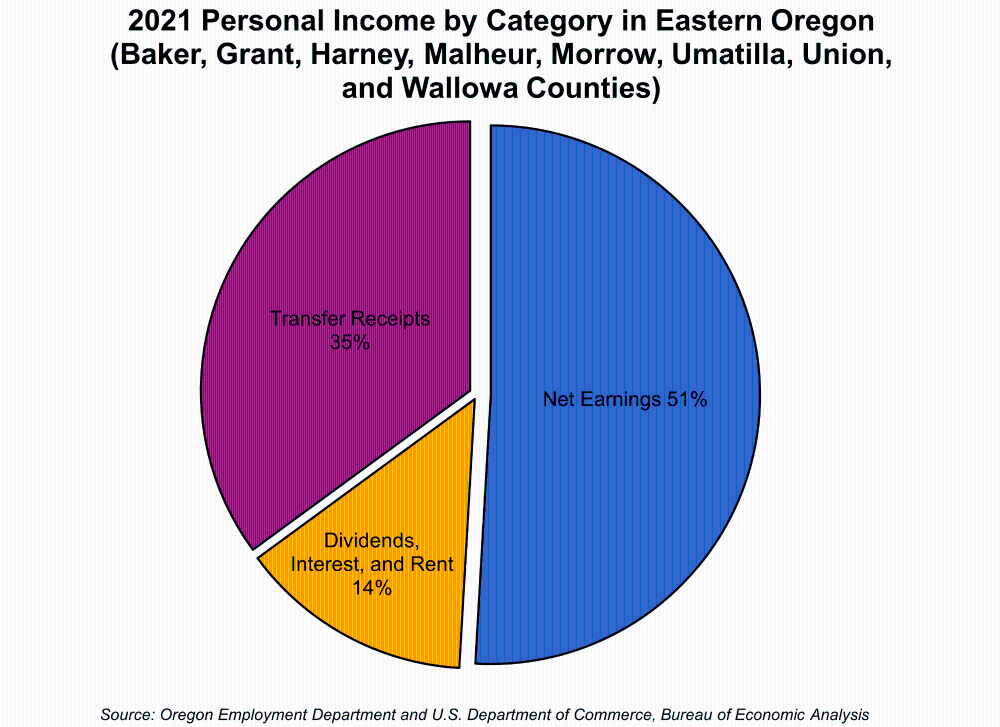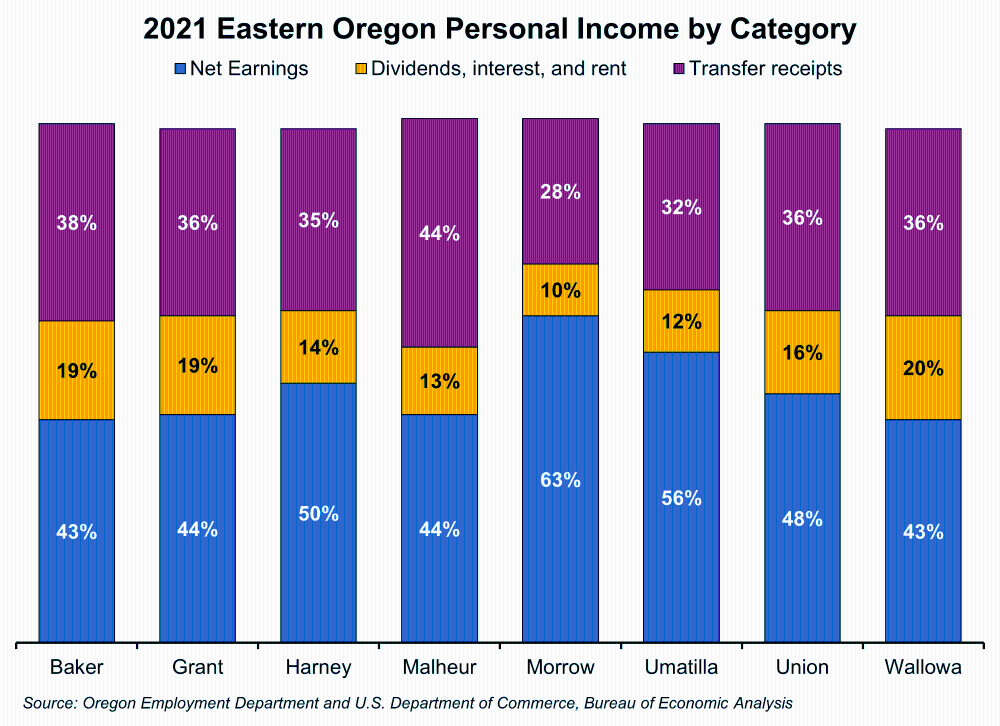Eastern Oregon’s Personal Income Grew by $3.5 Billion from 2011 to 2021
November 6, 2023Eastern Oregon (Baker, Grant, Harney, Malheur, Morrow, Umatilla, Union, and Wallowa counties) had a total personal income of about $9.0 billion in 2021, up from $5.5 billion in 2011, a growth rate of 64%. Harney County had the highest rate of personal income growth in the area (79%), followed by Morrow (78%), Malheur (70%), Wallowa (70%), Baker (66%), Umatilla (61%), Union (58%), and Grant (57%). Eastern Oregon’s rate of growth was well below Oregon’s statewide growth of 80%.
Umatilla County had the highest nominal growth in personal income within Eastern Oregon (up $1.5 billion) since 2011, followed by Malheur ($506 million), Union ($484 million), Baker ($322 million), Morrow ($278 million), Wallowa ($165 million), Harney ($165 million), and Grant ($135 million) counties.

Net earnings made up 51% of Eastern Oregon’s total personal income in 2021, while transfer receipts made up 35% and dividends, interest, and rent accounted for the remaining 14%. This is a significant change from 2011, when net earnings made up 55% of the area’s personal income and transfer receipts made up only 27% with dividends, interest, and rent accounting for 17%.
Morrow and Umatilla County residents had a higher percentage of their total personal income from net earnings, at 63% and 56% respectively, while Harney (50%), Union (48%), Grant (44%), Malheur (44%), Baker (43%), and Wallowa (43%) all have much lower shares.

Income from transfer receipts has increased significantly statewide (114%) from about $29.7 billion in 2011 to about $63.4 billion in 2021 and within Eastern Oregon (111%) from about $1.5 billion to about $3.2 billion over the same time period. This income includes but is not limited to government payments to individuals like Medicare and Medicaid, unemployment insurance compensation, veterans’ benefits, and Federal grants and loans to students.
Income from dividends, interest, and rent within the area increased by 33% from 2011 to 2021, to $1.3 billion. This was well below the growth rate statewide of 70%.